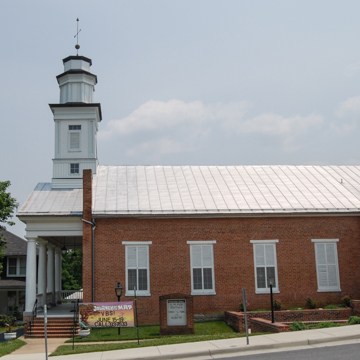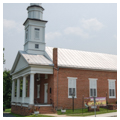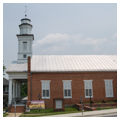This, the town's oldest church, was built on a lot donated by Anthony Spengler for use by an English Presbyterian congregation. The Greek Revival brick church is fronted by a portico with four Tuscan columns above which is a wooden bell tower consisting of a square base with corner pilasters and two smaller octagonal stages. Inside, the single space is covered with a flat pressed-metal ceiling. The two-story addition to the rear of the church was built for educational programs.
Behind the church is a large square, Flemish bond brick house (c. 1870; 164 Afton Place) with a hipped roof topped by a small monitor, a semicircular portico with Doric columns, and a heavily bracketed cornice. A cemetery extends down the hill behind the church and the house.





